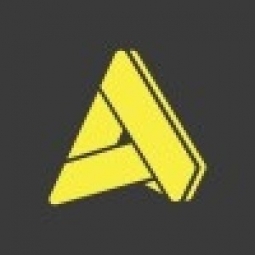公司规模
Mid-size Company
地区
- America
- Europe
国家
- Austria
- United States
产品
- Ross Enterprise Resource Planning Module
- Ross Inventory Manager (RIM)
技术栈
- Enterprise Resource Planning (ERP)
- Inventory Management System
实施规模
- Enterprise-wide Deployment
影响指标
- Productivity Improvements
- Cost Savings
技术
- 功能应用 - 企业资源规划系统 (ERP)
- 功能应用 - 库存管理系统
适用行业
- 食品与饮料
适用功能
- 仓库和库存管理
用例
- 库存管理
服务
- 系统集成
关于客户
PEZ Candy Inc. 是一家国际砖块糖果制造商。该公司成立于 1927 年,总部位于奥地利维也纳,90 多年来一直是一家家族企业。其位于康涅狄格州奥兰治的北美工厂负责所有国内业务,每年通常生产约 450 万磅糖果。北美工厂拥有约 175 名员工。自 2005 年以来,PEZ 一直依靠 Aptean Ross ERP 来监控和管理其北美制造流程,并积极采用新的 Ross 技术来保持其在市场上的竞争优势。
挑战
PEZ Candy Inc. 是一家国际砖块糖果制造商,其过时的技术影响了生产效率,因此面临着挑战。他们无法在配送中心同时处理多项任务。该公司需要升级其移动设备,因为供应商不再支持其操作系统。购买移动计算机是一项重大投资,因此该公司认为他们需要提供一种解决方案,该解决方案不仅要着眼于新设备,而且还要提供可提高生产效率的运营改进。
解决方案
PEZ Candy 决定在其工厂内实施 Ross Inventory Manager (RIM)。之所以选择 RIM,是因为该产品具有额外的灵活性和速度。该系统不仅无缝融入 PEZ 的日常运营,而且还具有移动灵活性。RIM 的实施过程很简单,一旦安装和配置,产品便可无缝运行。无需重新配置;无需逐步调整;无需变通方法。RIM 的开发旨在扩展数据收集的基本功能,消除可用性限制。它简化了安装过程,并允许在任何设备上使用 Ross Data Collection,因此库存流程可以随时随地继续。
运营影响
数量效益

Case Study missing?
Start adding your own!
Register with your work email and create a new case study profile for your business.
相关案例.

Case Study
The Kellogg Company
Kellogg keeps a close eye on its trade spend, analyzing large volumes of data and running complex simulations to predict which promotional activities will be the most effective. Kellogg needed to decrease the trade spend but its traditional relational database on premises could not keep up with the pace of demand.

Case Study
HEINEKEN Uses the Cloud to Reach 10.5 Million Consumers
For 2012 campaign, the Bond promotion, it planned to launch the campaign at the same time everywhere on the planet. That created unprecedented challenges for HEINEKEN—nowhere more so than in its technology operation. The primary digital content for the campaign was a 100-megabyte movie that had to play flawlessly for millions of viewers worldwide. After all, Bond never fails. No one was going to tolerate a technology failure that might bruise his brand.Previously, HEINEKEN had supported digital media at its outsourced datacenter. But that datacenter lacked the computing resources HEINEKEN needed, and building them—especially to support peak traffic that would total millions of simultaneous hits—would have been both time-consuming and expensive. Nor would it have provided the geographic reach that HEINEKEN needed to minimize latency worldwide.

Case Study
Energy Management System at Sugar Industry
The company wanted to use the information from the system to claim under the renewable energy certificate scheme. The benefit to the company under the renewable energy certificates is Rs 75 million a year. To enable the above, an end-to-end solution for load monitoring, consumption monitoring, online data monitoring, automatic meter data acquisition which can be exported to SAP and other applications is required.

Case Study
Coca Cola Swaziland Conco Case Study
Coco Cola Swaziland, South Africa would like to find a solution that would enable the following results: - Reduce energy consumption by 20% in one year. - Formulate a series of strategic initiatives that would enlist the commitment of corporate management and create employee awareness while helping meet departmental targets and investing in tools that assist with energy management. - Formulate a series of tactical initiatives that would optimize energy usage on the shop floor. These would include charging forklifts and running cold rooms only during off-peak periods, running the dust extractors only during working hours and basing lights and air-conditioning on someone’s presence. - Increase visibility into the factory and other processes. - Enable limited, non-intrusive control functions for certain processes.

Case Study
Temperature Monitoring for Restaurant Food Storage
When it came to implementing a solution, Mr. Nesbitt had an idea of what functionality that he wanted. Although not mandated by Health Canada, Mr. Nesbitt wanted to ensure quality control issues met the highest possible standards as part of his commitment to top-of-class food services. This wish list included an easy-to use temperature-monitoring system that could provide a visible display of the temperatures of all of his refrigerators and freezers, including historical information so that he could review the performance of his equipment. It also had to provide alert notification (but email alerts and SMS text message alerts) to alert key staff in the event that a cooling system was exceeding pre-set warning limits.

Case Study
Coca-Cola Refreshments, U.S.
Coca-Cola Refreshments owns and manages Coca-Cola branded refrigerators in retail establishments. Legacy systems were used to locate equipment information by logging onto multiple servers which took up to 8 hours to update information on 30-40 units. The company had no overall visibility into equipment status or maintenance history.







